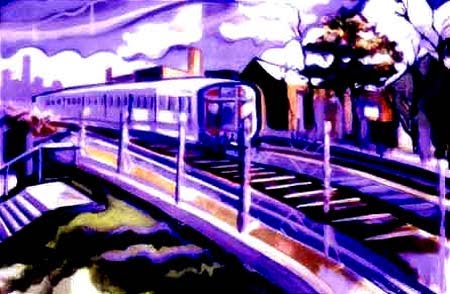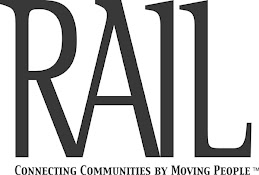
On any given weekend day between April and October, there's hundreds of excursion and heritage trains operating across the United States. Some are steam-hauled relics, which hark back to the heydays of railroading. Others are more modern, diesel-powered trainsets, while others are collections of trolleys and streetcars running under electric power. And, yet, no matter their source of locomotion, nearly all of them function as a destination in of themselves – a train ride for the sake of riding the train itself, not to reach any specific location for purposes of regular trips. These rolling museums are an important part of our heritage, and help transfer knowledge of – and appreciation for – the importance of railroading to the development of our nation.
But others blur the line between an excursion railroad and something offering closer to the original and inherent purpose of operating passenger trains: to get people where they need to go. How do we determine a standard, revenue service rail operation from those serving more educational and entertainment aims? After all, nearly all excursion trains collect fares, have conductors and engineers to oversee the train's operation, and have published schedules for when trains depart – much like any revenue service rail system.
There are a few easily-identifiable characteristics to distinguish the two sets. It is easier to define the former – revenue service rail lines – from the latter. First is the presence of two terminal stations, separated by a significant distance, from which passengers can arrive and depart on the trains. This first category automatically rules out most of the country's excursion railroads, where, even if there is a specified location where the train ends its outbound run and turns around, new passengers are not commonly allowed to board and on-board passengers cannot depart.
Secondly are the inclusion of on-line stations, or stops made between the two terminals where passengers can again alight or board the train to travel to another intermediate station or one of the terminals. Hardly any heritage railroads offer this option.
Meanwhile, does the railroad offer a frequency of trips indicating it's role as a convenient option for many travel periods? This is a trickier classification, as many of Amtrak's intercity trains only offer a single trip each day, and some operatre even less frequently. Conversely, a sizable number of excursion railroads will operate a handful of daily trips – especially on weekends in the summer – to cater to the large number of tourists and visitors. Some of the cog railroads that climb mountain cliffs will even field hourly service or better during their busy seasons.
Lastly, are connections available to other intercity travel and public transit options, allowing riders to travel to greater numbers of destinations beyond the reach of the rail line? While nearly every intercity and local passenger rail operation will offer such connectivity, only a small number of heritage railroads promote linkages to other travel options. A few immediately come to mind: The Adirondack Scenic Railroad shares Utica's Union Station with Amtrak's Empire Service, Lake Shore Limited and Maple Leaf trains travelling across Upstate New York. Soon, the Maine Eastern Railroad will benefit from connections to Amtrak's Downeaster trains from Portland and Boston in Brunswick, where Downeaster passengers can continue their trip to Maine costal communities such as Bath, BoothBay and Rockland.
Of course, by now you're probably wondering why we're spending this much space covering excursion trains – and the definition thereof. After all, excursion trains have been around more more than a half century, and while some operations come and go, a healthy heritage railroading industry seems pretty secure for many years to come. To answer this question, we point to this past Saturday's debut of the Saratoga & North Creek (S&NC) Railway in Upstate New York, operating over the former Adirondack Railway between Saratoga Springs and North Creek. The line hadn't seen passenger trains over its entire length in more than 50 years, and it's North Creek terminus is especially historic, as it was the location where Theodore Roosevelt returned from his hunting trip in the Adirondacks in 1901 en route to Buffalo, where he would be inaugurated as President following the assassination of William McKinley.
Despite its nascent status as a railroad, the S&NC is offering an ambitious schedule – one that comes closer to a regular, revenue operation than most other excursion railroads. In relation to the four criteria outlined above for revenue service rail lines – terminal stations, in-line stops, frequency and connectivity – the S&NC meets all of them. Take a look at its initial schedule of operations:
The S&NC has two, clearly-identified terminal locations in North Creek and Saratoga Springs – with a mid-day short-turn option at Hadley/Luzerne – seven designated stops along the route (stations might be a bit of a misnomer, as station buildings only exist at Saratoga Springs and North Creek), three daily roundtrip trains five days per week, and connections to two Amtrak trains – the Adirondack between Montreal and New York City, and the Ethan Allen Express between Rutland, Vt. and New York City – along with other regional and local travel options at Saratoga Springs.
By all accounts, the S&NC is a full-fledged, revenue service passenger railroad. The operation even takes things a step further by designating each trip as a named train, the Hudson Explorer, The Merganser and New York Express, respectively – a nod to the fantastic railroading tradition of giving its trains evocative and inspirational titles (see our post on the brilliance of named trains).
Still, the rail line serves a largely rural and recreational region, where New Yorkers come from across the state to vacation during the summer and explore the foliage in fall. So, while Saratoga Springs lies just outside the state's Capital Region centered in Albany, and is just a few hours ride from New York City, its hard to envision the railroad functioning primarily as a means for travelers to make a large number trips to commuter, for business or other non-entertainment purposes. The railroad's operations will also be paired down after October in advance of the region's strong winter, although a number of holiday specials will take place. Meanwhile, Iowa Pacific Holdings – which operates other excursion railroads across the nation as well as the Machu Piccu Train in Peru – has been contracted to operate the service and maintain the railroad, much of which is owned by local governments. These factors would suggest a more excursion orientation for the S&NC.
In reality, perhaps the S&NC is a little of both – an excursion railroad that can also serve to help meet the mobility needs of a part of the Adirondack region. Time will tell if residents along its route will take advantage of the trains to travel within and beyond the communities it serves, giving the railroad reason to consider eventually expanding its operations to daily service throughout the year. Such growth would serve as the truest indication of the railroad's role as a bona fide, regular service rail line. In the meantime, vacationers and tourists will benefit from an active and robust excursion operation, helping to draw lessons from the past and an enjoyable way to spend the day – on a train.
P.S. The S&NC includes a well-appointed fleet of locomotives and passenger coaches to support its train schedule. The railroad acquired several bi-level domed railcars that offer panoramic views of the line's scenic territory from other excursion railroads, as well as bi-level commuter railcars from the Long Island Railroad. It also inherited single-level coaches from it's predecessor, the Upper Hudson River Railroad, which only operated trains on the north end of the rail line. Iowa Pacific has also acquired some impressive motive power: a General Electric Dash-8 and an EMD BL-2, both of which have been painted in the livery of the Delaware & Hudson Railway, which owned and operated the rail line for more than 50 years after it purchased the route from the former Adirondack Railway.





